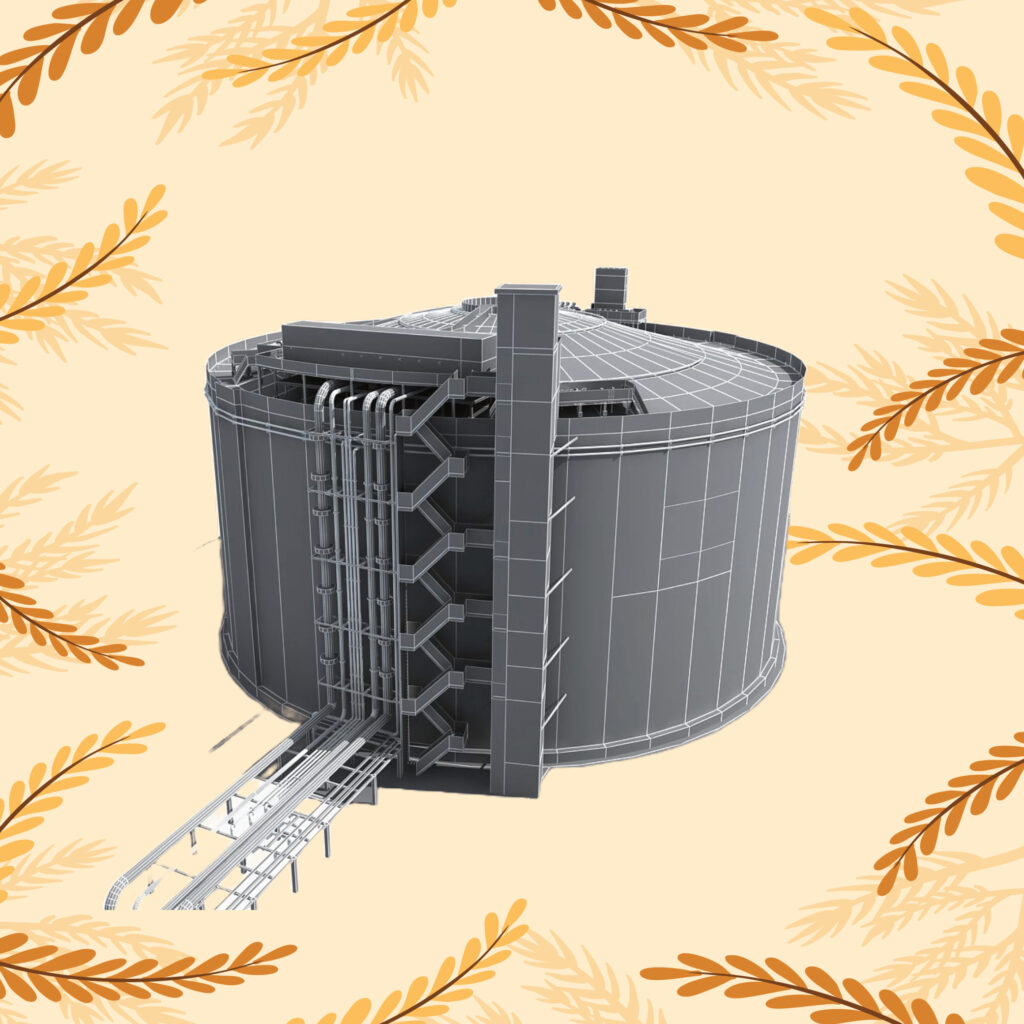Design and Construction:
These facilities can vary in size and design based on the quantity and type of commodities to be stored. They may range from small-scale silos to large warehouses or storage complexes. Design considerations include factors like capacity, accessibility, ventilation, temperature control, and security measures.
Storage Capacity:
Multi-storage tanks are designed to accommodate large quantities of food items. They may feature multiple storage compartments or tanks to segregate different types of commodities and prevent contamination or spoilage.
Temperature and Humidity Control: Proper temperature and humidity control are critical for maintaining the quality and safety of stored food items. Some multi-storage tanks may be equipped with climate control systems to regulate temperature and humidity levels, especially for perishable goods.
Ventilation and Air Circulation: Adequate ventilation and air circulation help prevent moisture buildup, mold growth, and insect infestation. Ventilation systems may include fans, vents, or other mechanisms to ensure proper airflow throughout the storage facility.
Security Measures: Given the importance of stored food items for food security, multi-storage tanks often incorporate robust security measures to prevent theft, vandalism, or unauthorized access. Security features may include surveillance cameras, access control systems, perimeter fencing, and security personnel.
Maintenance and Monitoring: Regular maintenance and monitoring are essential to ensure the integrity of the storage tanks and the quality of stored commodities. This may involve inspections, cleaning, pest control, and routine maintenance of equipment and infrastructure.
International Agreements: In times of conflict or war, countries may enter into agreements or treaties to protect essential infrastructure, including multi-storage tanks, from being targeted. These agreements aim to safeguard food supplies and ensure the continuity of food distribution even during periods of hostilities.Overall, multi-storage tanks play a crucial role in food storage and distribution systems, contributing to food security, stability, and resilience in various regions and countries.
A multi-storage tank facility serves as a vital cornerstone in ensuring food security and stability within a region or country. Designed to accommodate a diverse range of food items and commodities, these facilities are meticulously engineered to safeguard perishable and non-perishable goods alike. With a focus on maintaining optimal conditions for storage, such facilities incorporate features such as temperature and humidity control systems, robust ventilation, and stringent security measures. Each tank within the facility is strategically designed to accommodate specific types of commodities, preventing cross-contamination and ensuring the integrity of the stored goods. Regular maintenance and monitoring efforts are paramount to uphold the quality and safety of the stored items, safeguarding against spoilage, contamination, and pest infestation. In times of conflict or war, international agreements are often established to protect these critical infrastructure assets, underscoring their indispensable role in maintaining food supply chains and bolstering resilience against crises.
TERMS
Investing in a Project or inventions, the bond with a five-year maturity period involves purchasing a debt security where no interest is paid during the term. Instead, the investor receives the increased value of the bond at maturity, reflecting the success or profitability of the project over the five years. This type of investment can offer potential for significant returns .
In ongoing negotiations with Gaza, a primary agenda item centers around the protection of our multi-storage tank facilities, critical infrastructure for maintaining regional food security and stability. Amidst geopolitical tensions, ensuring the safety and security of these storage facilities emerges as a pivotal priority to safeguard our nation’s food reserves. Collaborative efforts are underway to establish agreements that deter any potential attacks on these vital assets, reinforcing the commitment to preserving essential food supply chains even amidst conflict. Such agreements underscore the mutual recognition of the significance of these facilities in upholding the welfare and sustenance of civilian populations, transcending political divides for the greater humanitarian cause.

